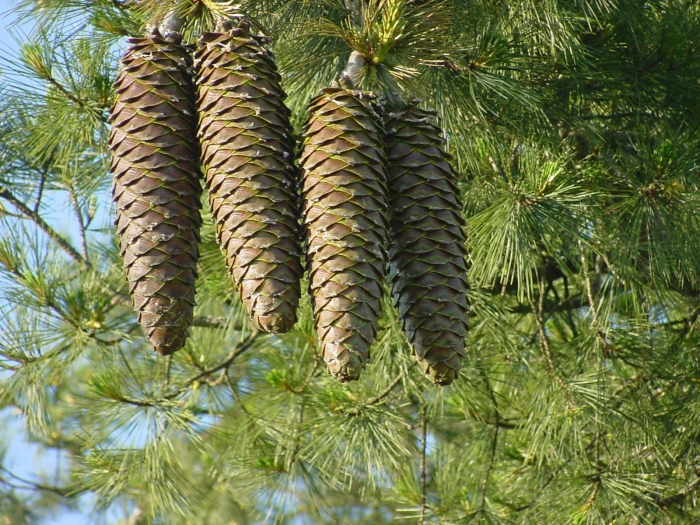Sugar Pine
(Pinus lambertiana)
Sugar Pine (Pinus lambertiana)
/
/

Richard Sniezko, US Forest Service
Public domain



















































Estimated Native Range
Summary
The Sugar Pine is renowned for its large, elongated cones, which are the longest of any pine, sometimes reaching over 50 centimeters (20 inches) in length. It is valued in cultivation for its stately form, ornamental cones, and as a source of nectar for honey production. The tree is used in reforestation projects and as a specimen tree in large landscapes. It requires full sun for optimal growth but can tolerate some shade when young. Sugar Pine prefers well-drained, acidic soils and requires regular water, especially in drier climates. It is susceptible to white pine blister rust and bark beetles, which can be significant problems.CC BY-SA 4.0
Plant Description
- Plant Type: Tree
- Height: 175-200 feet
- Width: 10-25 feet
- Growth Rate: Rapid
- Flower Color: N/A
- Flowering Season: Non-Flowering
- Leaf Retention: Evergreen
Growth Requirements
- Sun: Full Sun
- Water: Medium
- Drainage: Fast, Medium
Common Uses
Bird Garden, Deer Resistant, Drought Tolerant, Edible*Disclaimer: Easyscape's listed plant edibility is for informational use. Always verify the safety and proper identification of any plant before consumption., Fragrant, Low Maintenance, Rabbit Resistant, Rock Garden
Natural Habitat
Mountainous regions of the Pacific Coast from Oregon through California to Baja California, Mexico
Other Names
Common Names: Sugar Cone Pine , Riesen-Kiefer , Zucker-Kiefer , Zuckerkiefer , Pino De Azúcar , Pino Dulce , Pin De Lambert , Pin Géant , Pin À Sucre , Cukorfenyo
Scientific Names: Pinus lambertiana , Pinus lambertiana var. martirensis , Pinus lambertiana subsp. martirensis , Pinus lambertiana var. minor , Pinus lambertiana var. purpurea , Strobus lambertiana
GBIF Accepted Name: Pinus lambertiana Douglas